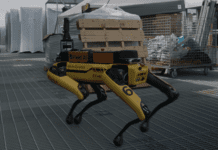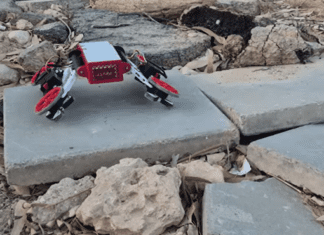This post is also available in:
 עברית (Hebrew)
עברית (Hebrew)
A new robot developed by scientists at Bristol Robotics Laboratory promises to revolutionize mobility and exploration.
The robot is called the Tetraflex, it is tetrahedron-shaped and equipped with flexible piping and is capable of navigating the most challenging terrains and transporting delicate cargo. This development could open up a world of possibilities for applications, from disaster response to ecological surveying.
Lead author of the study Peter Wharton explains: “The robot is composed of soft struts connected by rigid nodes. Each strut is formed of an airtight rubber bellow and the length of the strut can be controlled by varying the air pressure within the bellow. Higher pressures cause the bellow to extend, and lower pressures cause it to contract. By controlling the pressure in each bellow simultaneously we can control the robot shape and size change.”
According to Interesting Engineering, the Tetraflex has the unique ability to travel in a variety of ways, a kind of adaptability that makes it suitable for maneuvering through confined environments like disaster-stricken areas, inspecting oil rigs, or even exploring extraterrestrial terrain.
The key to Tetraflex’s extraordinary versatility is its soft-strut design- it can assume different shapes and sizes by altering the lengths of its struts, facilitating rolling, crawling, or even enveloping and transporting objects.
Peter noted that these capabilities are a natural consequence of working with such a versatile structure, and expressed his hope that other interesting capabilities will be developed in the future.
An earlier version of the Tetraflex participated in the RoboSoft 2022 Locomotion Competition in Edinburgh and secured third place, showcasing its ability to move over sandy terrain, traverse small gaps, and navigate around obstacles.
After having explored the locomotion and object transport capabilities of Tetraflex, the research team now plans to integrate machine learning algorithms, which will empower the robot to further refine its movement patterns and optimize existing ones.
This information was provided by Interesting Engineering.


























